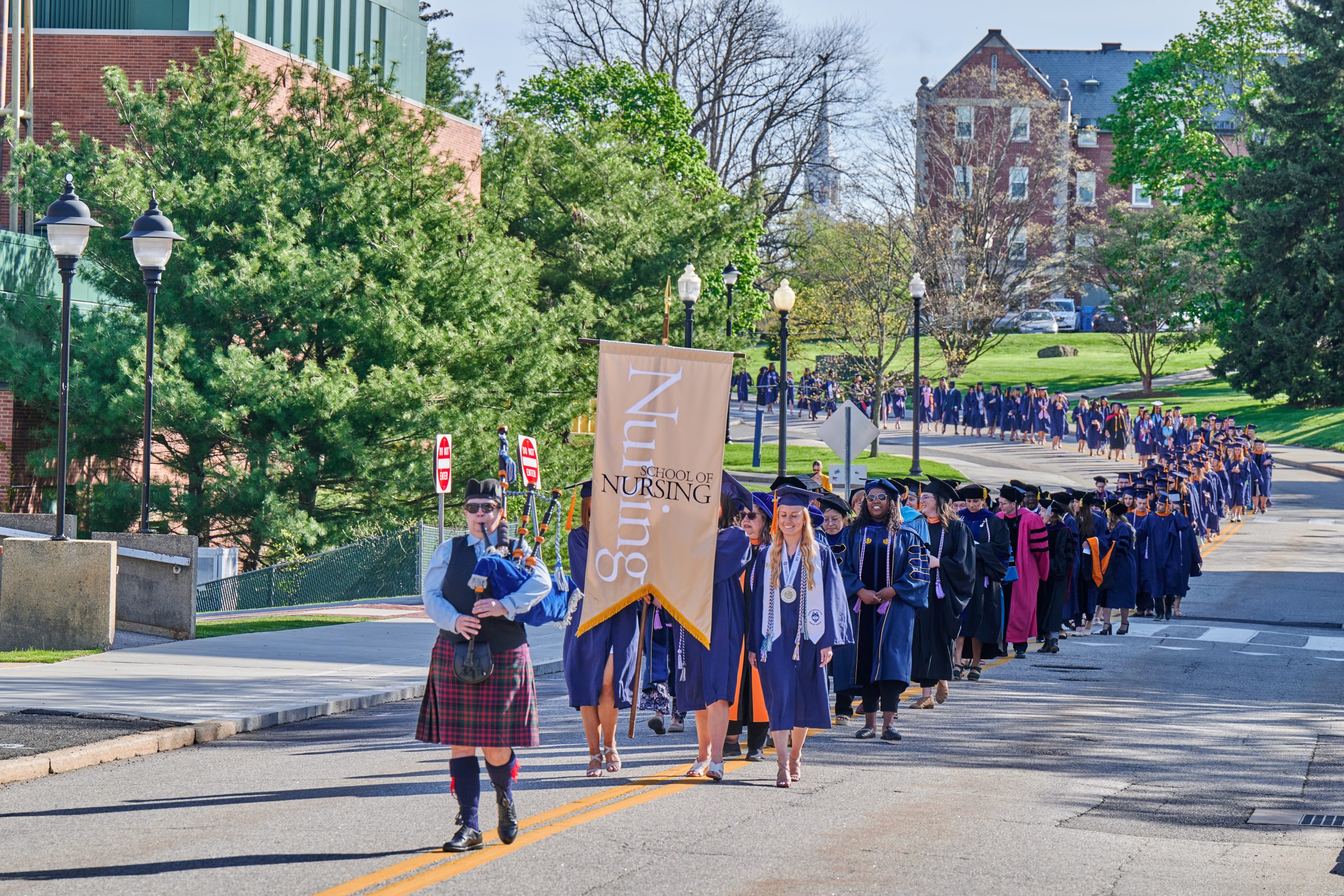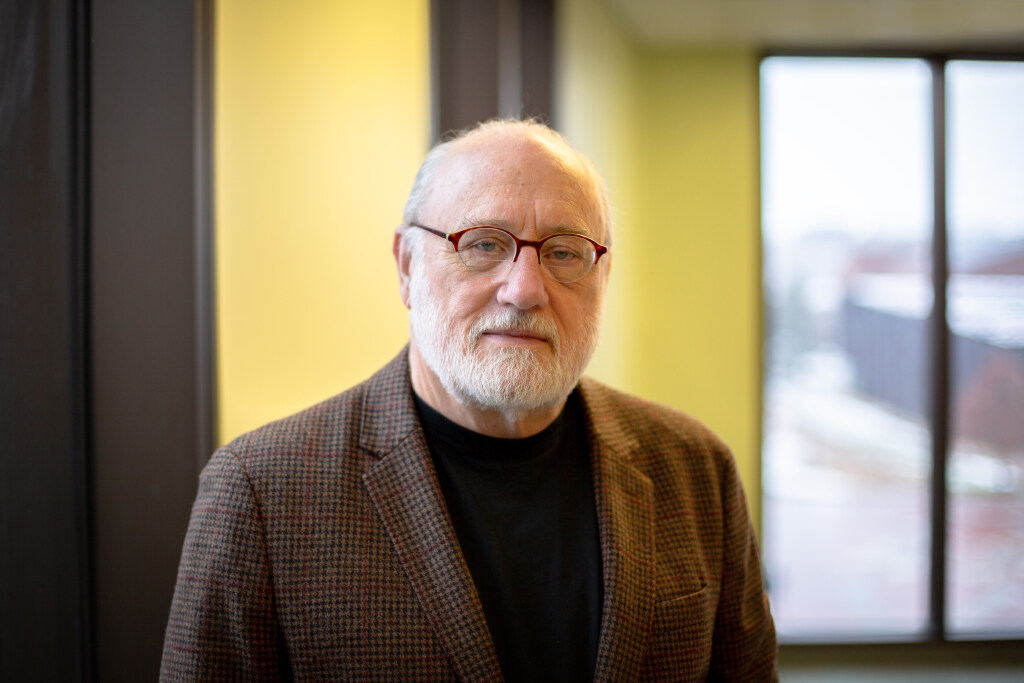By Bill Graulty and Nan Cooper
West Hartford-based Legrand/Wiremold has a lengthy history of product innovation and improvement. But like all companies, the firm’s new product development resources are not bottomless. Among the company’s popular products are Tele-Power® Poles – hollow metal units that encase and channel wires and cables from the ceiling down to desks and workstations in large open spaces. When customers needed a way to couple an additional length of pole in order to reach higher ceilings, Legrand/Wiremold approached the School of Engineering for assistance in designing an extender unit.
“It was a project that we would have liked to develop ourselves, but given other priorities, it was low on the list,” said John Marrotte, Engineering Manager for Legrand/Wiremold.
For several years, Legrand/Wiremold has sponsored projects for UConn’s Engineering Senior Design program. Senior Design is the capstone experience of an undergraduate’s years, in which students draw on their classroom experiences, but in a non-classroom setting. “This is where they can really compare theory with the real world,” remarked Dr. Thomas Barber, who manages the Senior Design program for Mechanical Engineering (ME) students.
Beyond Book Learning
 The Senior Design program begins with student teams carefully analyzing the design challenge presented by a sponsoring company. Team members meet with company and faculty advisors to explore the nature of the challenge, the client needs, economic and branding issues and other aspects of the design problem. Then, over the course of usually two semesters, the student team develops one or more product or process designs, carries out computer modeling, builds a prototype and conducts performance tests to demonstrate the effectiveness of the new design solution.
The Senior Design program begins with student teams carefully analyzing the design challenge presented by a sponsoring company. Team members meet with company and faculty advisors to explore the nature of the challenge, the client needs, economic and branding issues and other aspects of the design problem. Then, over the course of usually two semesters, the student team develops one or more product or process designs, carries out computer modeling, builds a prototype and conducts performance tests to demonstrate the effectiveness of the new design solution.
During the 2008/09 academic year, the team of Mechanical Engineering seniors (now graduates) Daniel Laurinitis, Allison Daub and John DiBenedetto took on the Legrand/Wiremold design challenge. The Tele-Power Poles, which are shipped to customers across the country, range in size from 10-15 feet. Their length makes them susceptible to damage during shipping, difficult to handle at job sites, and also unqualified for overnight delivery. The team was charged with devising a new unit that would allow customers to couple lengths of Tele-Power Pole together while ensuring the finished unit would retain the structural integrity of the original pole. They also had to take into account such diverse elements as aesthetics, manufacturability, and cost – a stretch for many engineering students who have focused chiefly on design aspects.
The team enjoyed full access to Legrand/Wiremold facilities and assistance from engineering and production staff, including Legrand/Wiremold’s Daron Callahan and co-op engineering student Sean Urquhart. “This was a very big advantage for us. It gave us access to everything so we were able to test and revise,” said DiBenedetto. At UConn, the students also benefited from the academic counsel of associate professor (ME) Zbigniew Bzymek, who advised and guided them during weekly meetings throughout both semesters.
The team developed a method of rigidly attaching sections together using inner sleeves and a clip. The inner sleeves are fastened to the covers of the extenders on one end during production, and they smoothly slide into the receiving covers to provide the pole with lateral strength. The clip is easily attached to the divider of the receiving pole with a set screw by the installer. To test the strength of the new design, the team developed a 3D model using a CAD program called COSMOSWorks, and subjected the prototype to physical testing as well. The team also developed wiring procedures and established optimal extender lengths to match market demand. Designing a commercial product also meant that it had to meet the National Electric Code (NEC) standards, the Underwriters Laboratory (UL) certification, and the requirements set forth by Wiremold.
“They had to evaluate the product analytically and then verify the design with tests on the actual product,” explained Marrotte. “It’s more than going by the book. This is a lot of work,” he added.
Daub said, “Not only did we strive to design a flexible product, but our team also wanted a product that would be easy to use in the field. The benefit of the extender is that it is used to build an entire Tele-Power Pole or extend a Tele-Power pole in the field, so it should be easy for the field technician to construct.”
Prototype to Patent
In addition to design and engineering, the students were also involved in a patent search on the new product.
As the ’09 spring semester concluded and the students prepared to embark on their careers, Tele-Power Pole Extenders became an official part of the Legrand/Wiremold product line (launched in early 2010). The company applied for a patent on the design this year, and product literature enthuses about the Pole Extender: “makes transporting and installing power poles a snap, literally. Just snap together 5 foot sections to create a Tele-Power Pole or extend the length of your existing pole.”
Added Marrotte, himself a former Senior Design student, “It’s great to see an actual product come from all of this hard work.”


